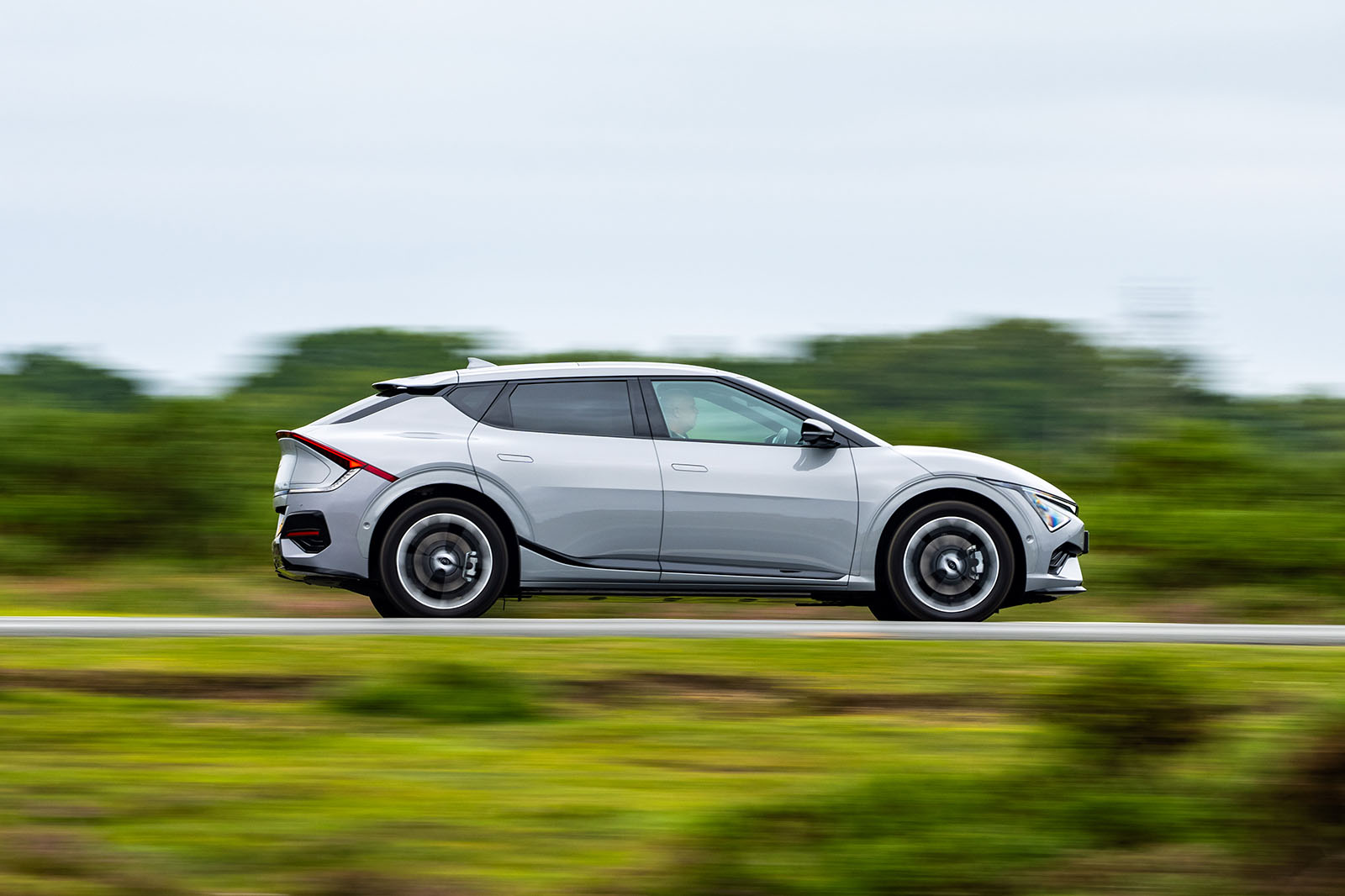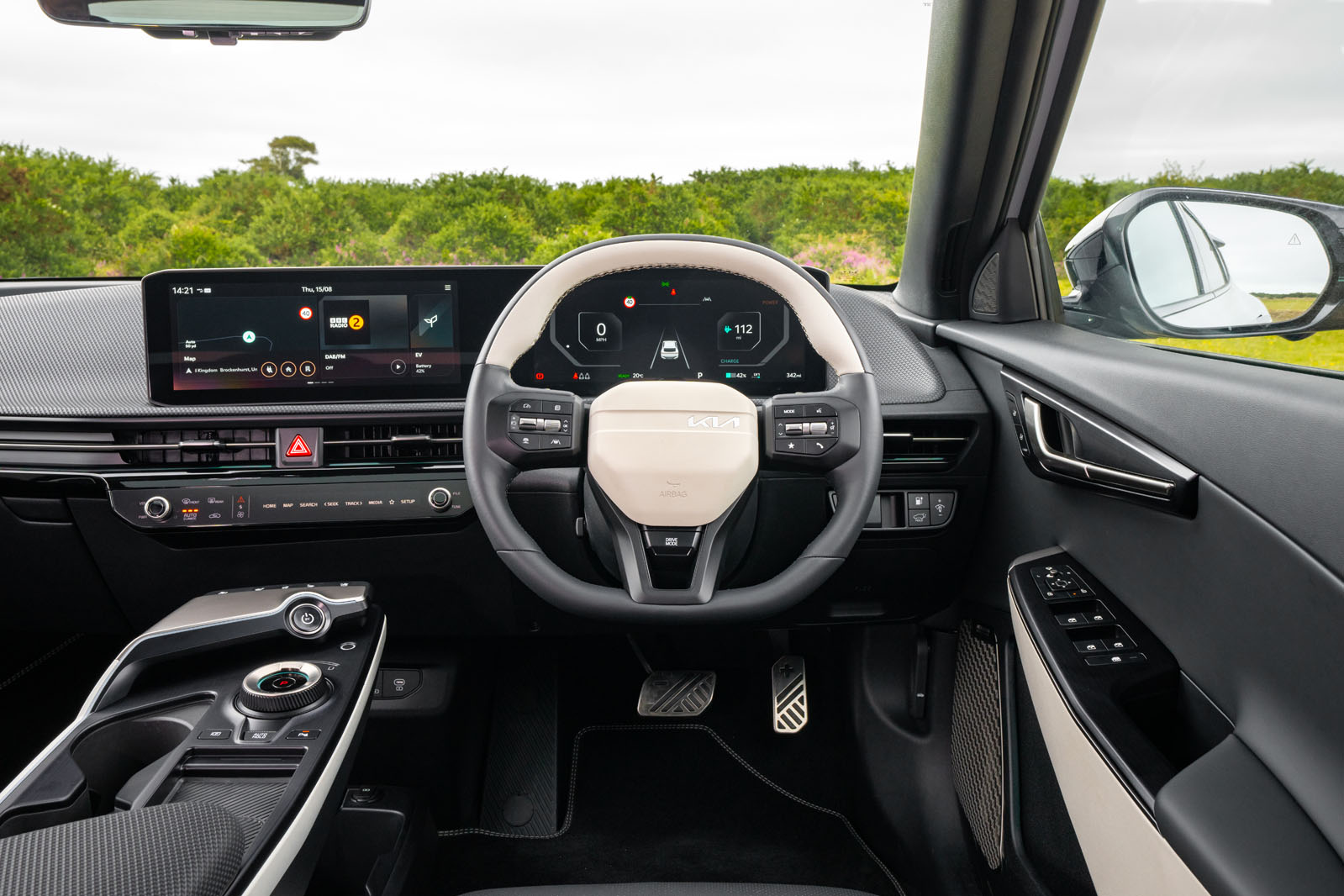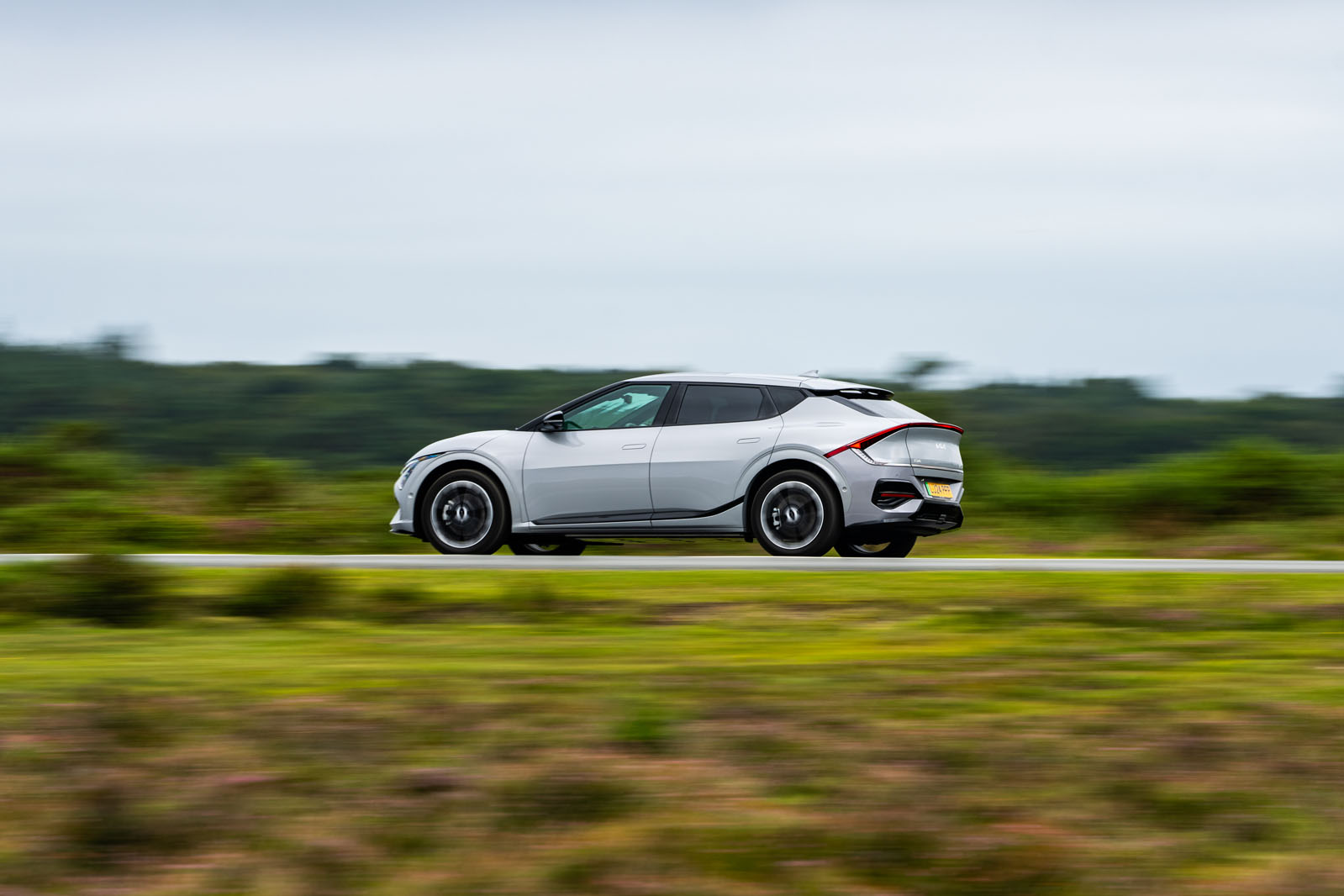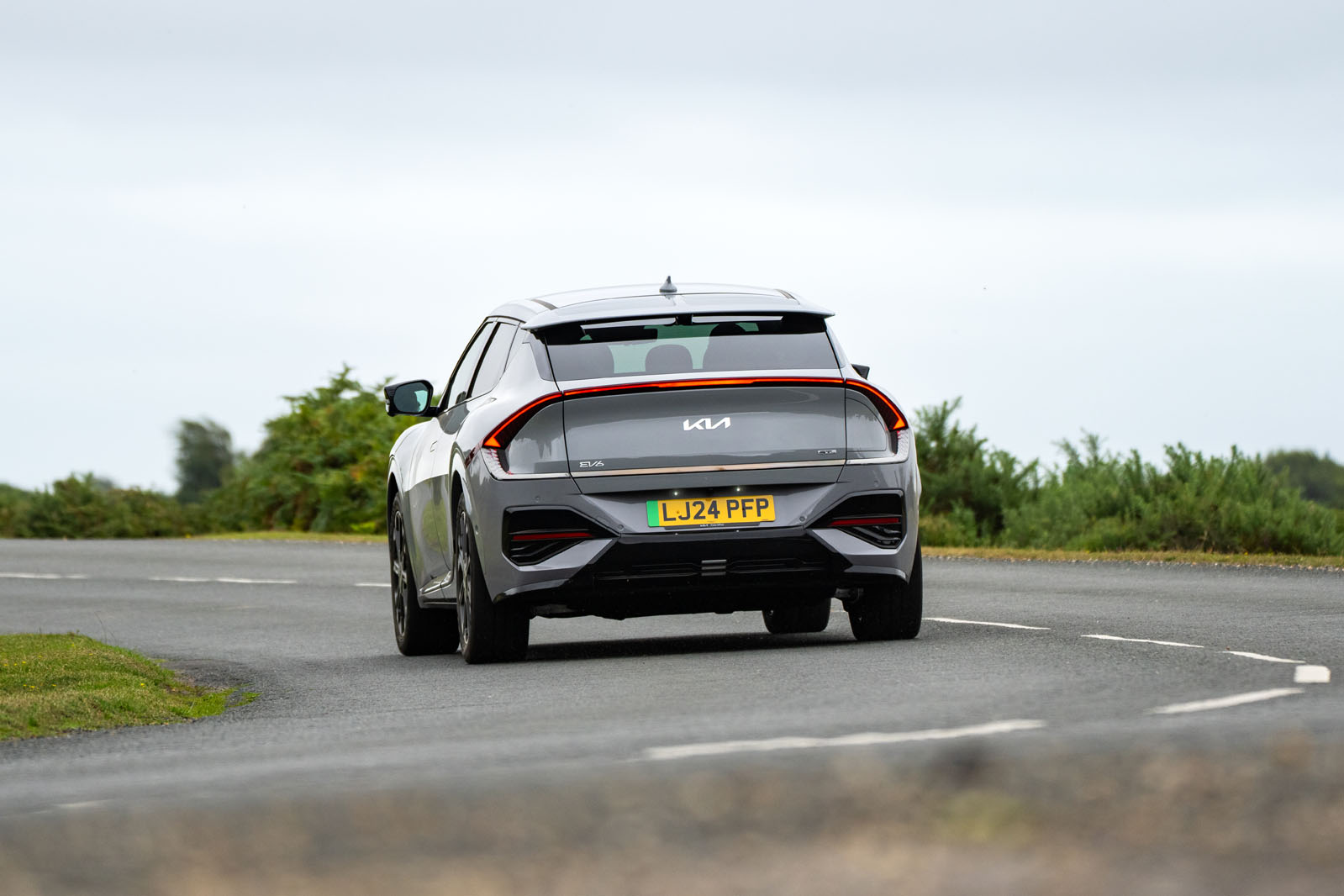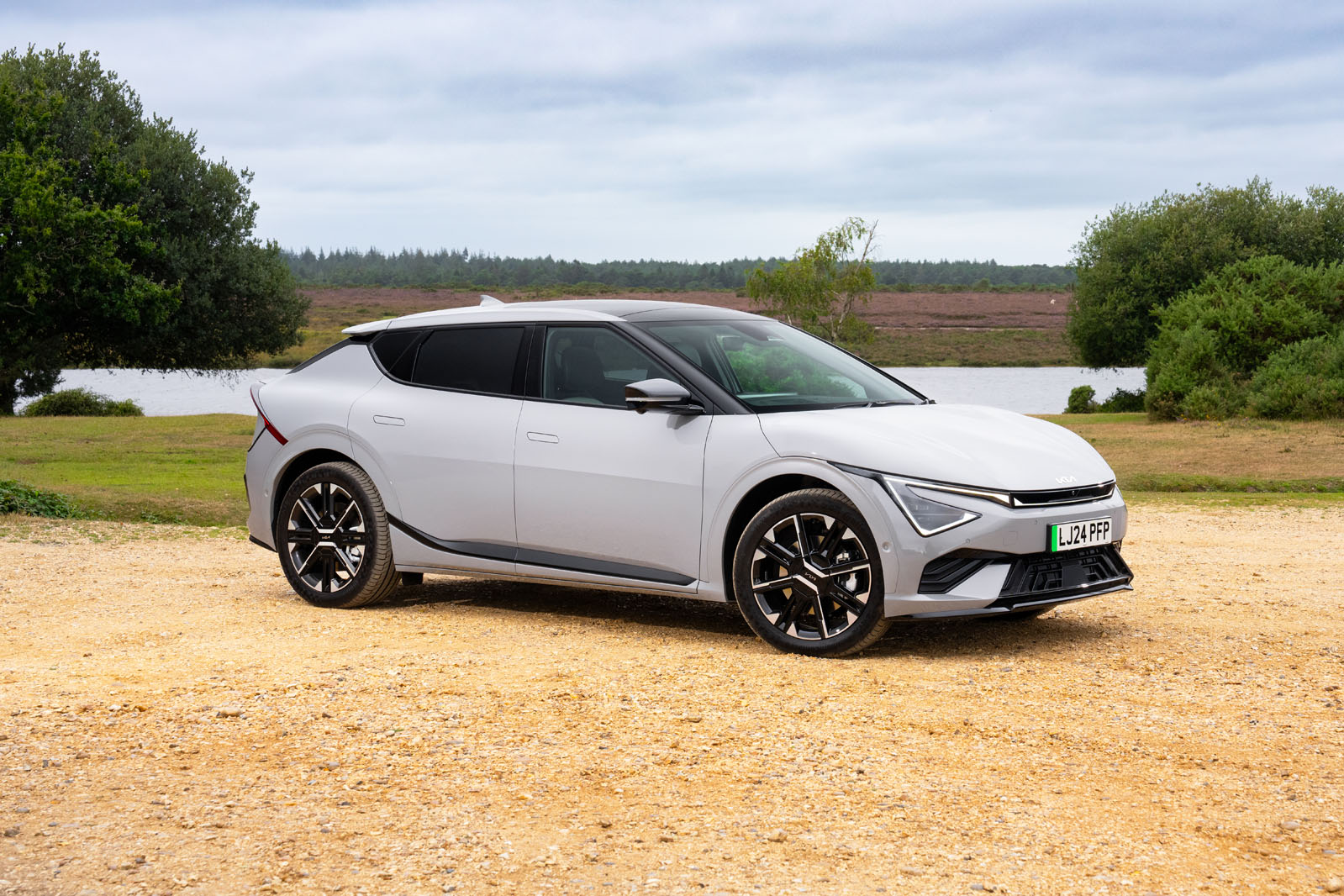The inside of the Kia EV6 calls up similar conflicting feelings to the outside, mixing hatchback and SUV cues. Getting into the driver’s seat, you drop down, car-like, but you don’t sink down quite as low as you do in, say, a BMW 3 Series saloon or a hot hatchback. At the same time, you have a legs-out driving position as if you were sat down fully recumbently, because the whole floor is quite high.
The steering column comes at you at a steeper angle than you might expect, given how you’re sitting. But you look out at a short bonnet and over a seemingly low scuttle in a way that’s vaguely reminiscent of being in a mid-engined supercar. It’s slightly unusual – not unpleasant, just different.
Thanks to its architecture, the EV6 has a flat floor, but rather than making an MPV-like airy cabin with a minimal centre tunnel, Kia has chosen a very driver-focused cockpit with a tall centre console. It houses the drive selector, a wireless charging pad, controls for the heated seats and steering wheel, and more storage space than you could shake a Renault Espace at.
You could argue that not creating a completely open cabin is a missed opportunity, but the effect contrasts nicely with the Hyundai Ioniq 5, which goes all in on the airy lounge vibe. The result is that the Kia feels like the more low-slung sporty option, while the Hyundai is more upright and relaxed, neatly differentiating these mechanically similar models.
Space in the rear is generous, with limousine levels of leg room. However, because of the high floor, taller adult passengers will sit with their knees in mid-air and their thighs unsupported, which can be tiring over long distances, and there isn’t much room under the front seats for feet, either. As a result, the space isn’t quite as comfortable or usable as the raw numbers would suggest. It’s a similar story with the boot: there is plenty of floor space, but because of the battery, the floor itself is rather high, and outright loading space is restricted in some ways.
Criticism of the EV6’s interior since it launched has hardly been uproarious, but we can celebrate this facelift's banishment of the centre console’s cheap-looking gloss black plastic in favour of a smart new matt finish and the introduction (at last) of wireless Apple CarPlay and Android Auto: this space-age, minimalist cockpit need no longer be blighted by a trailing phone cable. The steering wheel is now electronically adjustable, too, and there’s a fingerprint scanner that can be used to set your preferred seating position and climate settings.
We still wish there were a few more buttons, though. There’s a handsome new steering wheel with a few toggles and switches for the cruise control and audio, but the climate control is still the preserve of a part-time touch panel that can’t easily be operated on the move, because the icons are small and don’t give any haptic feedback. Plus, the gear selector is still an oversized and slightly fiddly rotary device, rather than a chunky, tactile stick or toggle. What price nonconformity?
Due to some recent regulatory changes, the EV6 now also requires a fairly extensive pre-flight check to ensure you’ve deactivated all the warning sirens and intrusive ‘aids’. You will likely forget one or two and then be reminded by blasting bongs a few miles later. Irritating, but you will have it set up to your preference in seconds after a few drives.












































